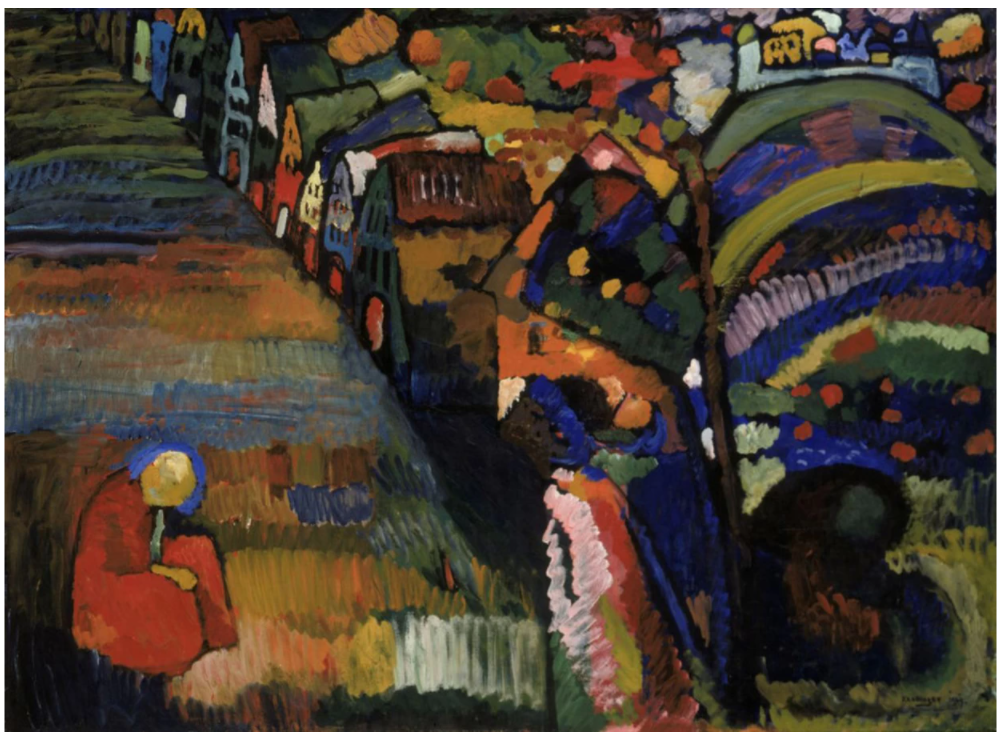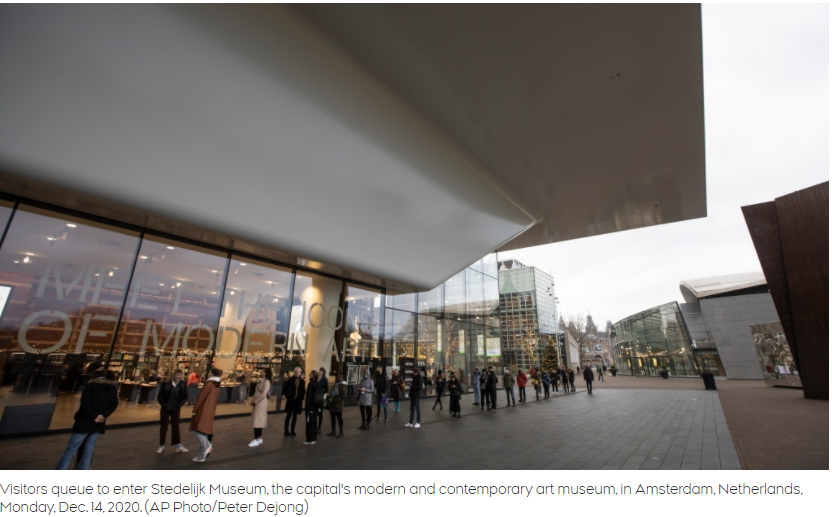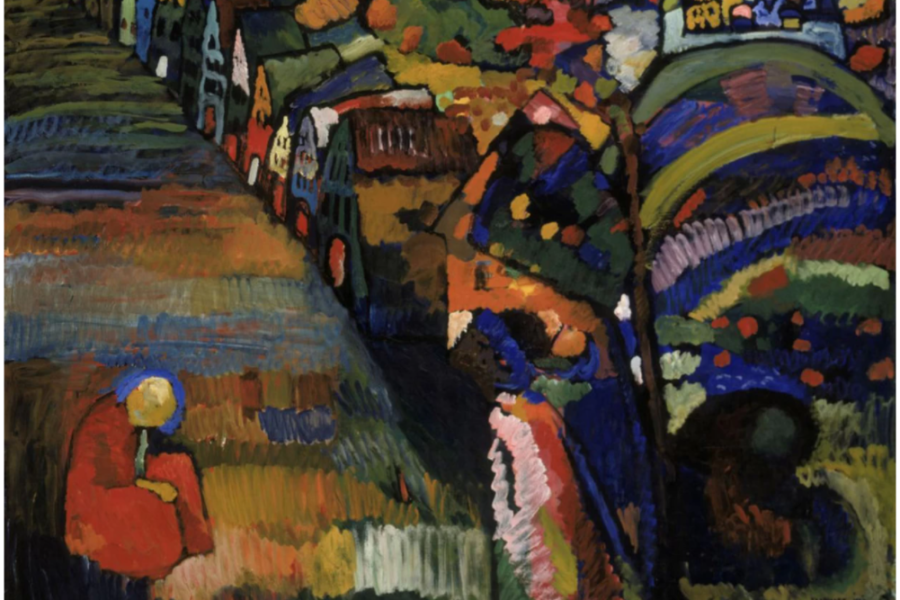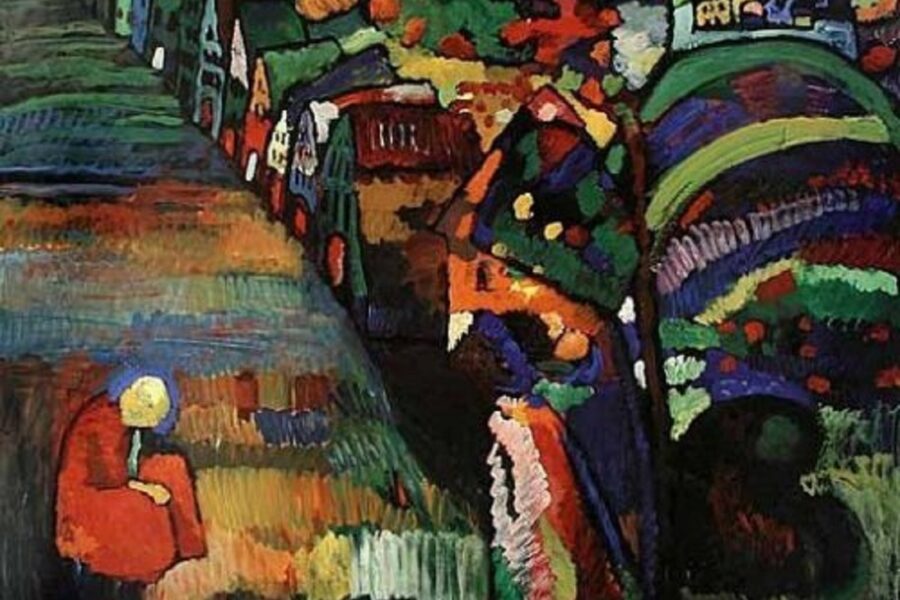
The painting was auctioned for a song on October 9, 1940, months after the Nazis took the Netherlands, and is considered a “forced sale”
By Senay Boztas AMSTERDAM
27 August 2021 • 2:47pm
A €20-million Kandinsky painting at the heart of a decade-long Dutch legal battle will finally be returned to the heirs of its original Jewish owners, righting a “historical injustice” 80 years after the family “sold” the artwork during the Nazi occupation of the Netherlands.
The colourful, 1909 masterpiece ‘Painting with Houses’, which currently hangs in Amsterdam’s Stedelijk Museum, was identified as Nazi-looted art by the heirs of the Lewenstein family almost a decade ago and has been the subject of a major dispute ever since.
Robert Lewenstein and Francesca Davis, both American, along with the late Elsa Guidotti, a Dutch woman, claimed that the painting was a forced sale, auctioned for a song on October 9, 1940, just months after the Netherlands surrendered to the Nazis and were occupied.
In general, the local Dutch restitution committee has recommended that “all sales of works of art by Jewish private persons … be treated as forced sales, unless there is express evidence to the contrary.”
However, in this case, the committee argued that the sale was caused by the family’s “deteriorating financial circumstance”.
It weighed the interests of the modern-day Stedelijk Museum as more important than those of the family and ruled in favour of letting the Stedelijk Museum keep it in 2018.

Now it appears that the city of Amsterdam has had a change of heart.
On Thursday, in a briefing to Amsterdam council, mayor Femke Halsema and deputy mayor for arts and culture Touria Meliani said the city had decided to return the Kandinsky.
“Due to the long duration of the process and the importance of correcting wrongs of the past, the municipality will return the artwork without further intervention from the restitution committee,” they wrote.
“To the municipality, it is clear that for this painting balancing interests of the heirs and the city of Amsterdam should no longer be the main goal (as stated in a binding advice by the restitution committee from 2018), but the main goal should be the correcting of injustice done to the victims.”
Simon van der Sluijs, from the Lewenstein family’s law firm, told the Telegraph: “We are very happy about this decision. We see this as a form of historical injustice that is now corrected, and it’s not so often that you have a chance to do that. Unfortunately, in February, one of the heirs died, so it’s a shame she didn’t live to see this.
“For government, it’s difficult to admit your mistakes. But balancing interests of the heirs of the family and the interests of public art…was a form of injustice and did not do right to the victims of looted art.”
The U-turn comes following a critical review last year by Jacob Kohnstamm that revealed 64 per cent of disputed objects in the Netherlands were not given to claimants and said the state’s interests should no longer be considered.



